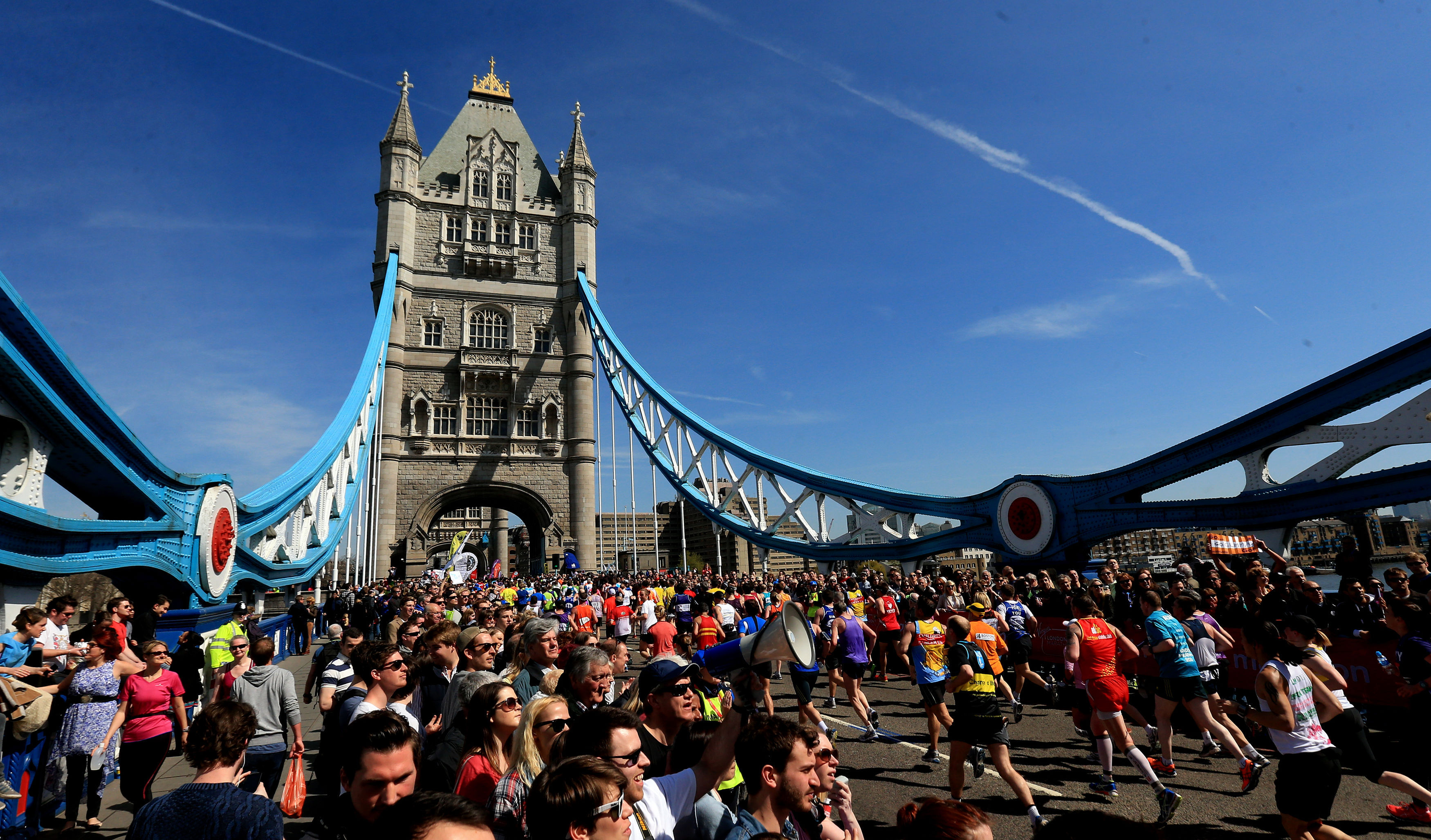Undergraduate perspective on Sports & Exercise Medicine – a BJSM blog series
By Sean Carmody & Liam Newton

The medical student experience – @seancarmody1:
The London Marathon is a fascinating event from a sports medicine perspective. The 38,000 participants represent nearly every category of athlete. The weekend warriors to world record-holders range in abilities and disabilities and thus, have greater potential for a wide-range of morbidities.
Pre-event injuries: why do they happen?
We all know many marathon-related injuries occur during training, before the event itself, meaning some participants may not make it to the starting line.
Reasons for this include: a (too) quick increase in mileage, previous injury and a competitive training motive. Common ailments during the race include cramping, blistering and skin chafing but these often go unreported. Although it is challenging to obtain accurate injury incidence from a marathon, by far the most frequent reported injuries appear to be musculoskeletal problems, with the knee affected the most.
What do doctors’ have to be the most alert for?
Major illnesses, such as cardiac arrest, are thankfully relatively rare occurrences, but their prevention is of paramount importance for medical organisers. Cardiac-related marathon deaths have been estimated to occur between 1 in 50-100,000 runs. Exertional heat stroke is another potentially life threatening disorder among marathon runners – important to note that there have been reports of occurrence in cool weather. In recent years, hyponatraemia due to excessive hydration has emerged as an important cause of race-related death and life-threatening illness among marathon runners – participants should be educated as to best hydration practices to prevent its onset; i.e. drink to thirst strategies!
My experience ‘on-the-ground’
This year I was fortunate to be part of the medical team supporting those running on behalf of the ‘Children with Cancer’ charity. The team consisted of 3 medical doctors, accompanied by several medical students. There were also podiatrists, massage therapists, osteopaths and physiotherapists to greet the runners once they had completed the race. The most common injuries we saw were light-headedness, nausea and chills. We managed these athletes effectively with close observation, rehydration, refuelling, and some general TLC (it’s amazing what a blanket and some Haribo can achieve!).
My take home message – do the simple things right and the rest will follow suit!
The London Marathon is an extraordinary event, and I commend those who coordinate the world-class medical care for the level of preparation they undertake.
I encourage any medical student interested in sports medicine to get involved in 2016’s edition.
The physiotherapy student experience – @newton_liam:
On a cool overcast morning, perfect for marathon running, I met up with the team of physiotherapists and was subsequently divided into smaller teams working in medical tents, down the length of the Mall. Within these tents were a range of health professionals including the St Johns Ambulance, podiatrists, doctors and nurses. Our team leader briefed us on all of the details of the day, including: documentation protocol, recording of injury statistics and insight into likely patient presentations. Our role was not just to perform massage, but rather, to perform acute musculoskeletal assessments and injury management and offer advice/education.
The afternoon started off fairly quiet with only the elite runners passing through, some of whom looked ridiculously comfortable post marathon for my liking! However, as the afternoon progressed the tent started to get busy with runners of all abilities. I was positioned within the first medical tent past the finish line that meant we were exposed to more of the acutely unwell or more physically restricted athletes. Initially I began shadowing and assisting the qualified members of the team, however as we got busier and as my confidence grew with the support of a magnificent team of physiotherapists, I was able to treat and educate some of my own runners! What soon became apparent was the real strength of mind some of these runners possessed, a real steel-like determination to complete this grueling event. Throughout the day I was exposed to a wide range of injuries/physical presentations including; a lateral ankle sprain at the hands of a water bottle (in mile 5 and still completed it!), severe lower limb cramp, patellofemeral pain, muscle strains, shock and dehydration.
Learning point – small packets of dioralyte as well as race pack goodies proved to be invaluable tools throughout the afternoon.
Exposure to a wide multi-disciplinary team was a valuable learning tool; I gained insight into medical and podiatry clinical reasoning which enabled me to provide a more holistic injury management plan.
Overall I thoroughly enjoyed my day. I learnt a great deal of acute injury management as well as the importance of keeping cool under pressure. I’d highly recommend this experience and found it a great way to promote the benefits of physiotherapy from a rehabilitation and performance enhancement perspective for runners and exercise enthusiastic alike.
***************************
Sean Carmody (@seancarmody1) is a final year medical student at the Hull York Medical School.
Liam Newton (@newton_liam) is a final year MSc (pre-registration) physiotherapy student at the University of Birmingham.
Dr. Liam West BSc (Hons) MBBCh PGCert SEM (@Liam_West) is a graduate of Cardiff Medical School and now works as a junior doctor at the John Radcliffe Hospital, Oxford. In addition to his role as an associate editor for BJSM he also coordinates the “Undergraduate Perspective on Sports & Exercise Medicine” Blog Series.
If you would like to contribute to the “Undergraduate Perspective on Sports & Exercise Medicine” Blog Series please email LIAMWESTSEM@HOTMAIL.CO.UK for further information.